One just never knows what might happen when you’re photographing birds.
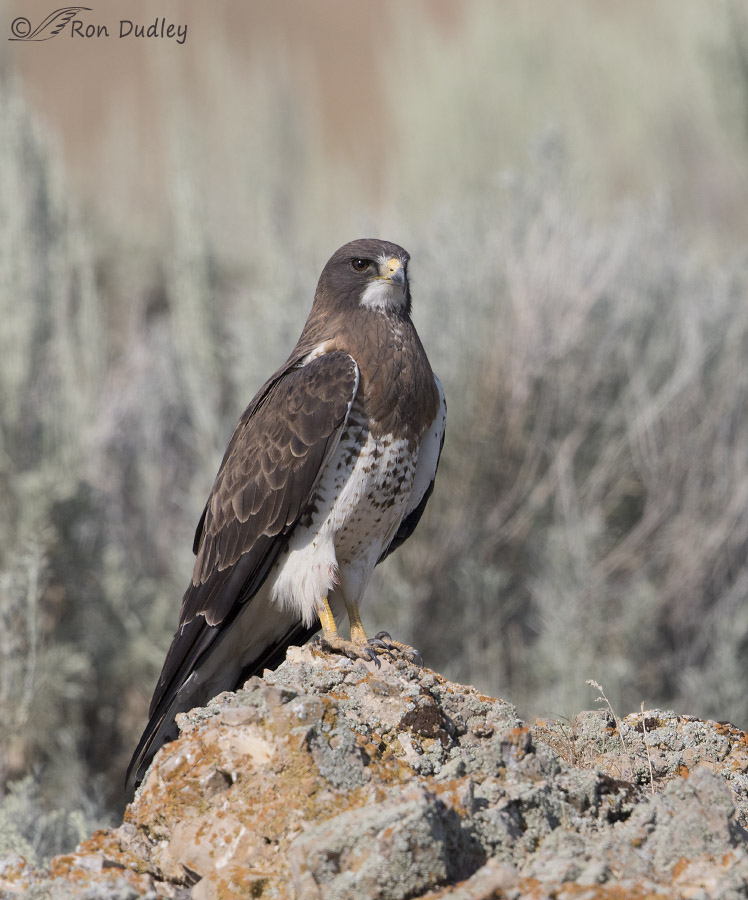
1/2500, f/6.3, ISO 500, Canon 7D Mark II, Canon EF500mm f/4L IS II USM +1.4 tc, not baited, set up or called in
I spent some time yesterday morning with this regal-looking light morph Swainson’s Hawk as it perched on a lichen covered rock in the Promontory area of northern Utah but several local residents took exception to its presence.
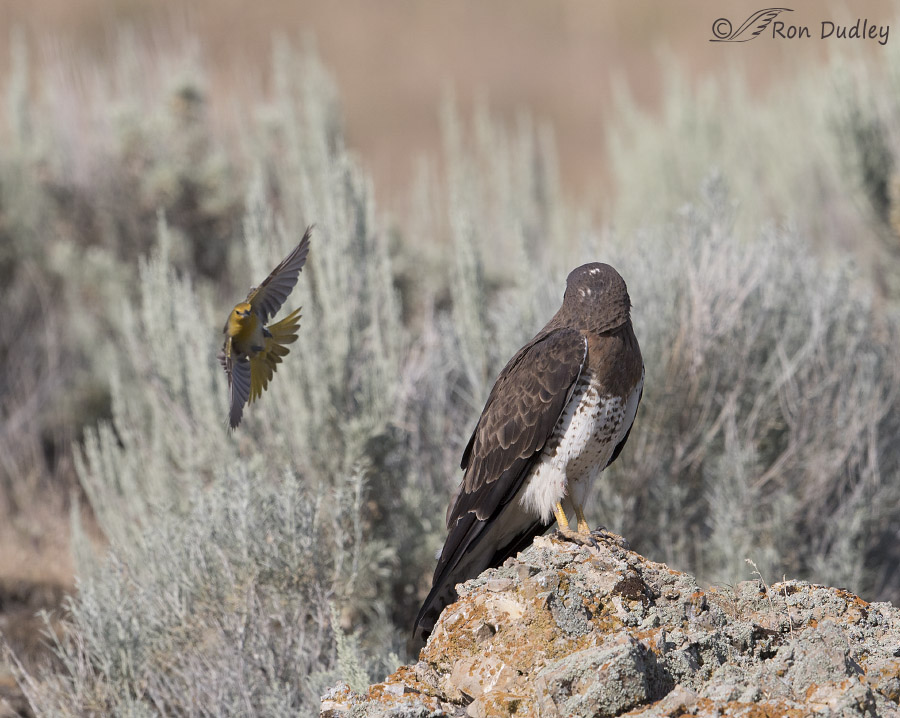
1/2000, f/7.1, ISO 320, Canon 7D Mark II, Canon EF500mm f/4L IS II USM, not baited, set up or called in
The first to show its displeasure was a Bullock’s Oriole that buzzed the hawk and then later perched on the rock just below it.
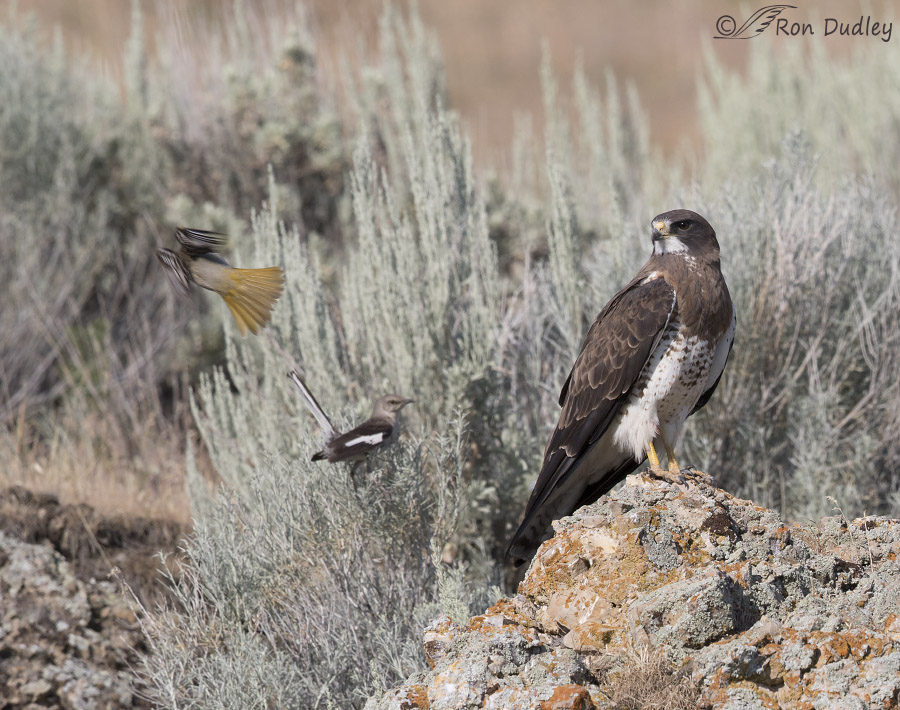
1/800, f/11, ISO 320, Canon 7D Mark II, Canon EF500mm f/4L IS II USM, not baited, set up or called in
As the Oriole took off from the rock a Northern Mockingbird joined in the fray (at this point I was fiddling with camera settings in an effort to get multiple birds sharp, with varying degrees of success).
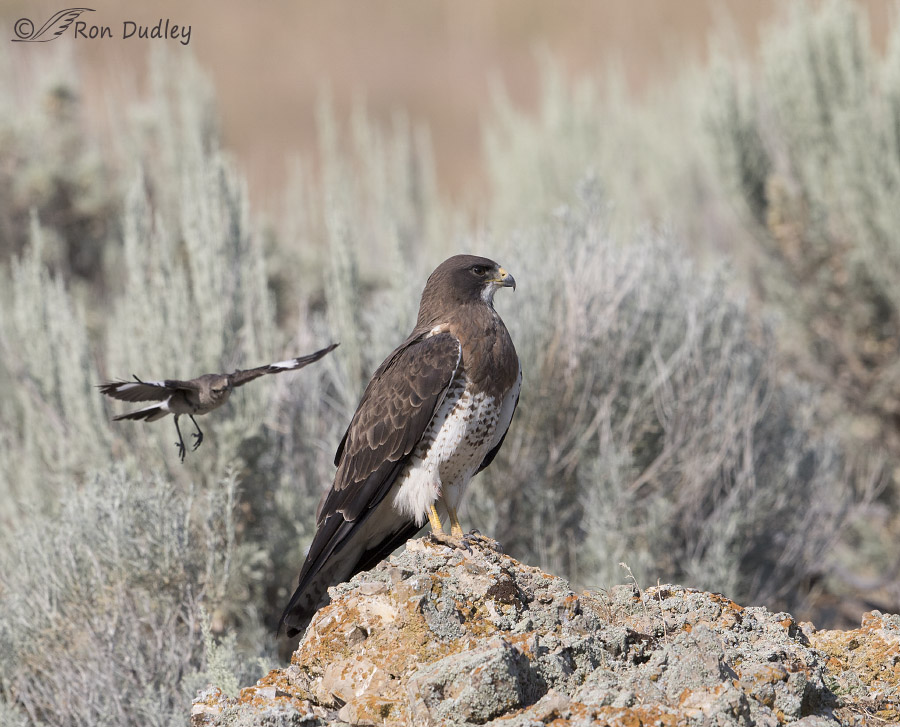
1/2000, f/7.1, ISO 320, Canon 7D Mark II, Canon EF500mm f/4L IS II USM, not baited, set up or called in
The mockingbird was the more persistent attacker of the two and in fact…
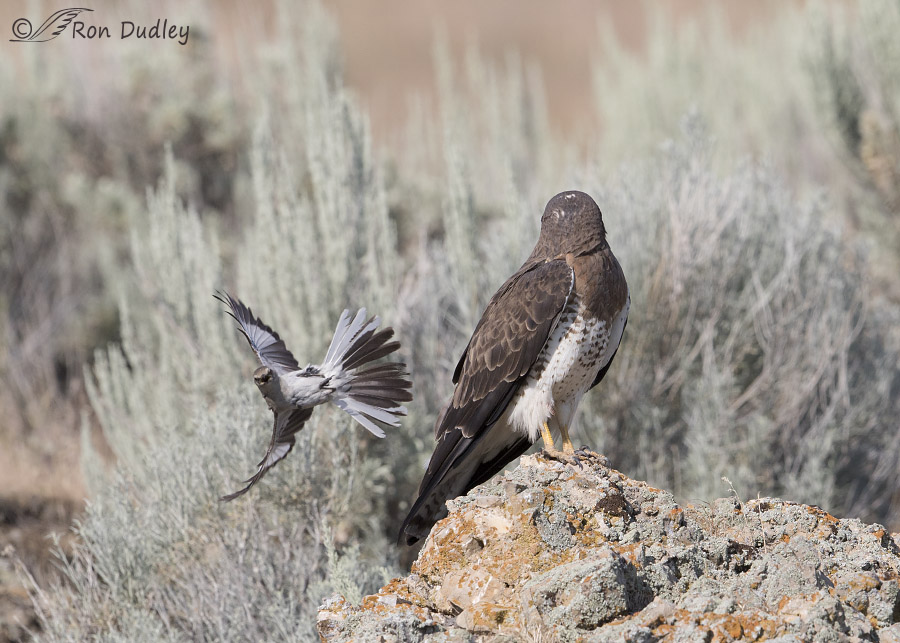
1/2000, f/7.1, ISO 320, Canon 7D Mark II, Canon EF500mm f/4L IS II USM, not baited, set up or called in
showed real enthusiasm for making life miserable for the hawk.
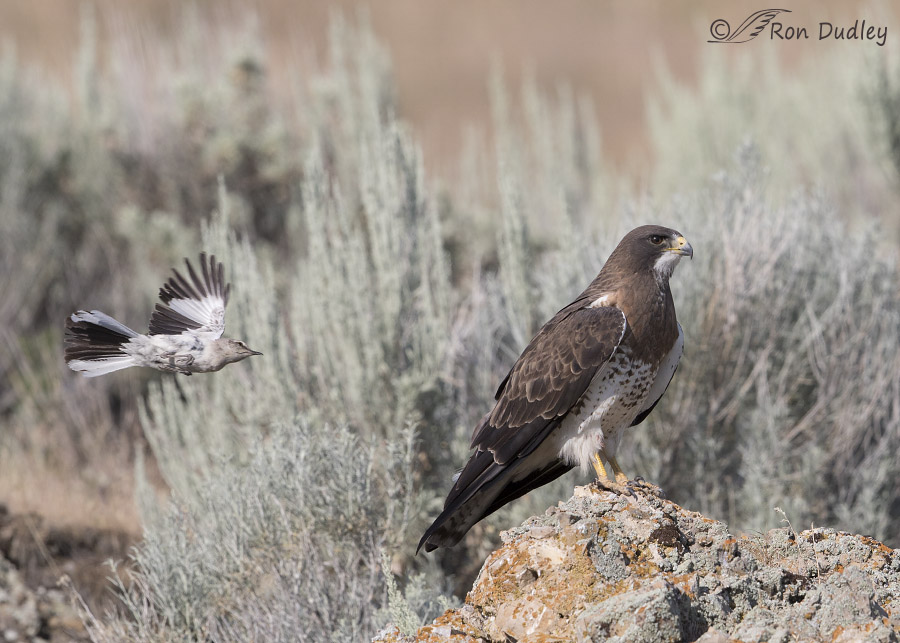
1/2000, f/7.1, ISO 320, Canon 7D Mark II, Canon EF500mm f/4L IS II USM, not baited, set up or called in
It came in for yet another aerial attack…
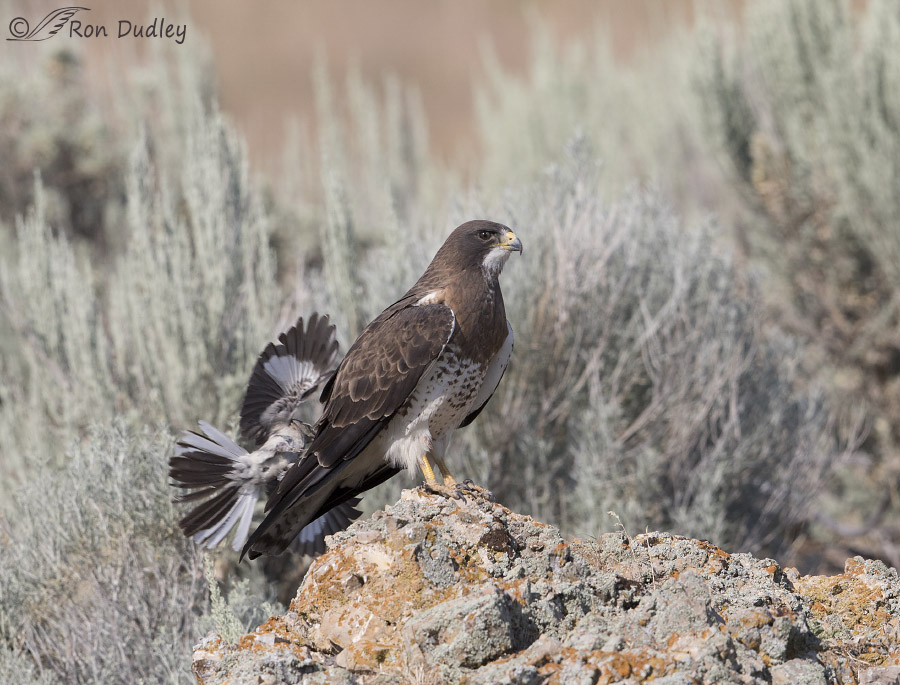
1/2000, f/7.1, ISO 320, Canon 7D Mark II, Canon EF500mm f/4L IS II USM, not baited, set up or called in
and appeared to come unusually close to the much larger hawk. I actually wondered if contact was made but I can’t be sure.
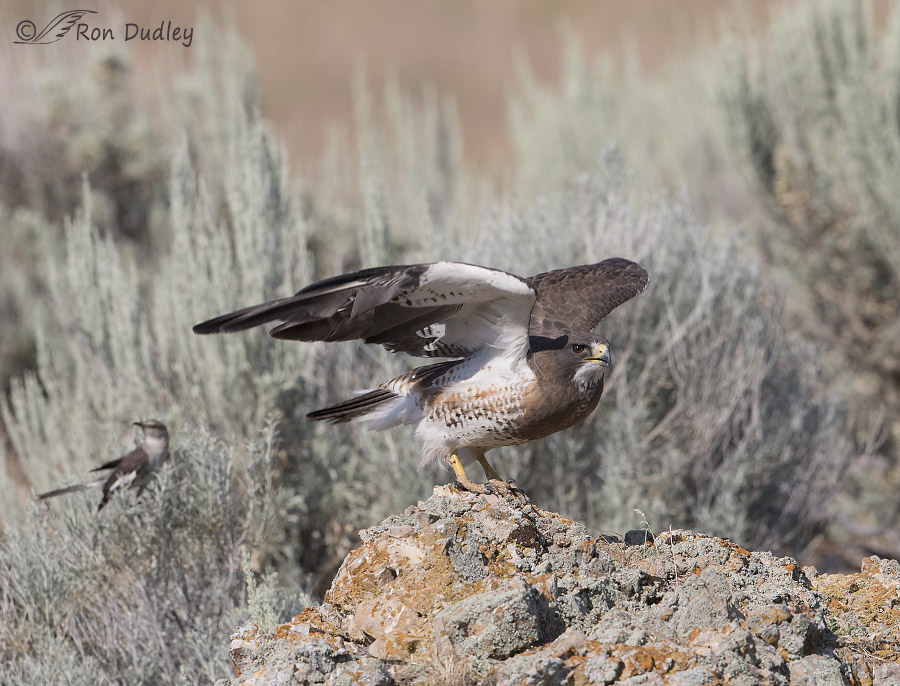
1/2000, f/7.1, ISO 320, Canon 7D Mark II, Canon EF500mm f/4L IS II USM, not baited, set up or called in
Eventually the hawk had enough of the harassment and got the hell out of Dodge.
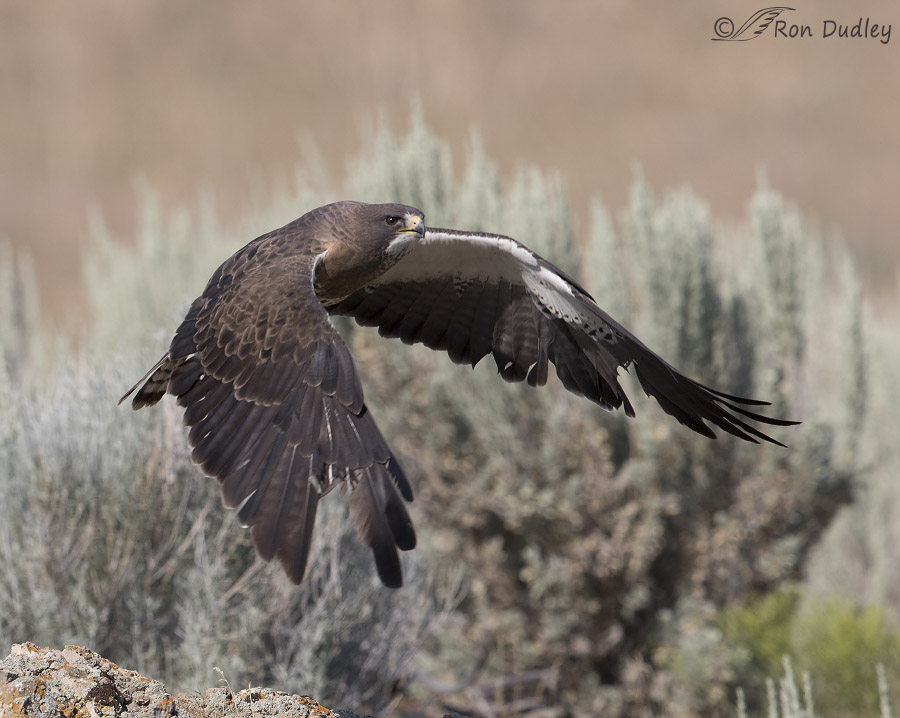
1/2000, f/7.1, ISO 320, Canon 7D Mark II, Canon EF500mm f/4L IS II USM, not baited, set up or called in
As it did so it became apparent that the buteo that was so handsome perched was actually missing a significant portion of its plumage to molt and was looking a little scraggly in flight. Several wing primary and secondary feathers were absent as were multiple tail feathers (better seen in other images).
I always enjoy watching interactions like this but photographing them can be a challenge with a long lens with limited depth of field and little time to think about camera settings in the heat of the action. It’s also fun to go back and see the details I missed as I’m reviewing my images.
Ron


The hawk in the first image is so regal. Then the rabble have to attack the status quo.LOL
Gorgeous series of images!
Amazing series.
I am always fascinated by just how many small birds punch well above their weight. My sometimes blunt father described it as ‘all balls and no brain…’
Ha, I think I’d have liked your father, EC.
No wonder the bird looked grumpy. The shot of the Hawk taking off is beautiful.
Thanks, Jean.
Such a proud, stately-looking bird in the first frame, then a beleagured, moth-eaten image after that. Poor bird certainly couldn’t be blamed for snatching a “snack-on-the-wing” after all that relentless harrassment.Especially like the frosted look of the front edge of the hawk’s wings and the flare and fan of the feathers of the marauder’s as they manuver in for attack, then twist away….wonderful series!
Agreed, Patty – quite a transformation from elegant to haggard when it opened its wings. Thank you.
Crazy amazing photos, as always!! Looks actually like broken primaries on the right wing.
I love starting my day with your photos….thank you!
“Looks actually like broken primaries on the right wing.”
Could be, Karen – I wondered the same thing but the loss looks to be bilateral so quite a coincidence to have them broken on both sides…
These shots are absolutely great Ron!!
You have caught the harassment beautifully!
It is interesting that birds will make alarm calls, attack and generally band together whenever they perceive a predator in their general area and thus enlist the help of other birds to displace the predator. Unless the Oriole or the Mockingbird has a nest in the general area, this is an excellent pictured example of the lengths these birds will go to remove a danger in their immediate space.
While I was watching this go down I was actually wondering if it was deliberate cooperative behavior, Dick. Who knows…
I would use the term instinctual cooperative behavior!
“Instictual cooperative behavior”—perfect! Don’t know if Dick is just sharing that term or invented it. Either way, it’s a perfect fit….which is it Dick???
InstiNctual…darn it!!! Evil IPad strikes again!!!
Oh, I just put in instinctual because that is in these birds DNA. They react both from instinct and from experience! If they have survived for a short period of time then they have associated behavior, but other reactions are purely by instinct. I tend to believe mobbing behavior is both reaction by instinct and learned from observing others of both its kind and other species.
Very interesting series. My favorite, after the first portrait, is the one where the Mockingbird looks like it had knocked itself out on the immovable Hawk object. I love seeing the kinds of behaviors you document.
Behaviors rock, IMO, Susan! Glad you agree.
What awesome amazing behavioral shots Ron! Thanks so much for sharing!
Charlotte
Glad you enjoyed them, Charlotte. Thank you.
Beautiful sequence Ron!
Thanks, John.
Very regal bird indeed Ron! I think the mockingbird and the oriole were showing off that they had all their feathers!
Ha, maybe you’re right, Nancy!